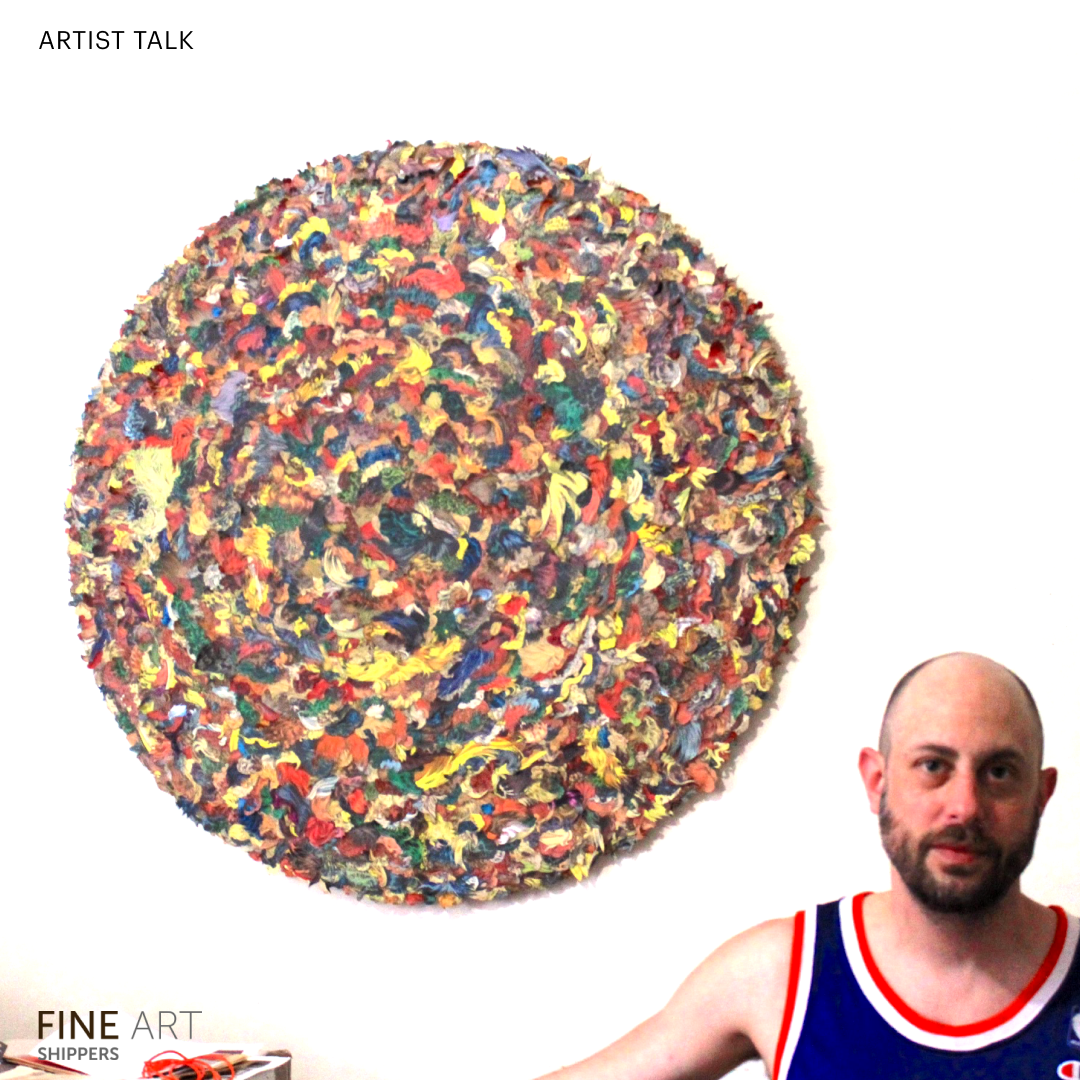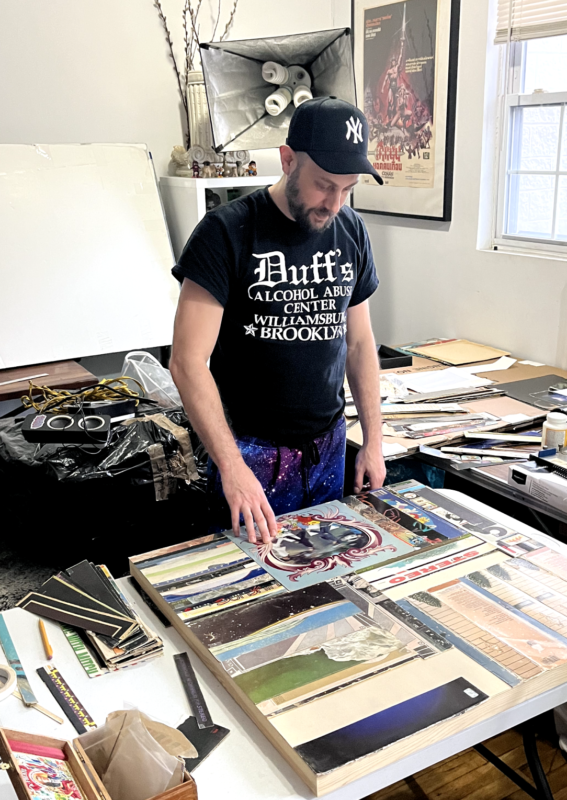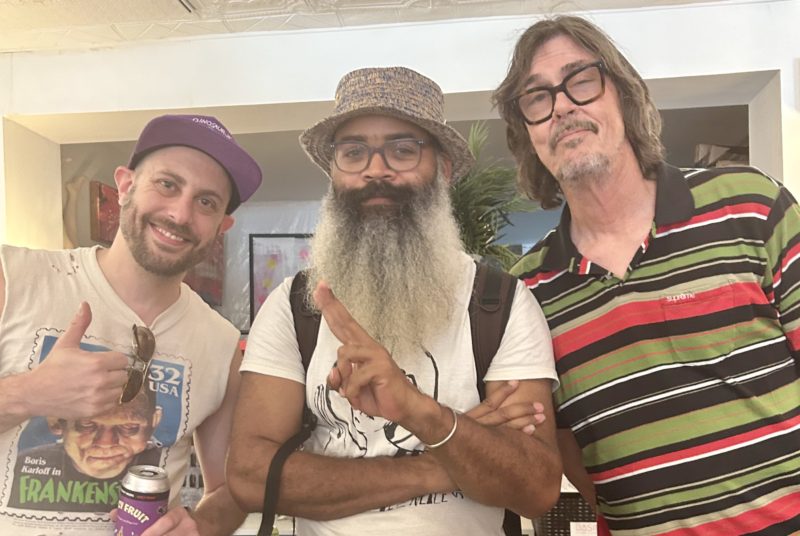
Morgan Jesse Lappin is a versatile visual artist, curator, and musician. For almost two decades, he’s been exploring and promoting collage—a medium that was overlooked for a long time. Fine Art Shippers spoke with him about the potential and limitations of this art form and some fascinating upcoming projects the artist is involved in.
Artist Talk: Morgan Jesse Lappin on the Beauty of Collage
How did your artist journey begin? Was there a distinctive turning point when you realized you wanted to be an artist?
Morgan Jesse Lappin: I’ve always loved the arts, but I never attended art school. In 2007, I teamed up with a friend to silk-screen a line of shirts. Quite spontaneously, I decided to try collage. The shirts were a success, which inspired me to take art seriously.
My love for this medium is partially rooted in my childhood memories of leafing through my grandmother’s The World Book Encyclopedia. Overall, I’m drawn to vintage materials, particularly those before the mid-90s, and I love their colors and textures.
In 2008, I began showcasing my collages in Brooklyn. My first group show exposure was through Craigslist, at the Niagara bar in lower Manhattan. This was a great experience: I enjoyed the audience’s reactions and the chance to connect with fellow artists. Around the same time, I began curating; my debut show, titled “Collorgy,” featured over 60 artists, musicians, and performers.
Since then, I’ve stayed in the art field, doing interior design, gallery work, and art handling, among other roles.
In 2013, I founded the Brooklyn Collage Collective. It has now evolved to become a gallery, located in my building’s basement. I host numerous activities there, including collage master classes, live sessions, and exhibitions.
What do you find most attractive in collage as an art form?
To me, collage is a form of meditation. I have ADHD, which might explain why my art pieces vary greatly in materials, themes, and ideas. Unlike many artists who tend to focus on specific themes or styles, I often jump from one to another. I think the diversity and, ultimately, the unpredictability of collage is what attracts me most of all.
Another reason is that historically, the art world has not given collage the same respect as other mediums. Previously, you could rarely find booths dedicated to collage at art fairs. I would say Instagram has played a part in boosting the medium’s popularity. Although the interest in collage has grown over the years, there’s still much progress to be made. Among other things, I want to elevate its reputation through the various activities I organize.
How do you approach a collage piece? Are there specific themes you prefer to explore?
Much of my work revolves around recurrent themes. For example, I’m fascinated with architecture, so I often create imaginary cities. Recently, I started blending illustrated buildings with photographs of real structures, mixing color with black-and-white images. While my pieces often depict older eras, I like combining different time periods.
What challenges does collage present as a medium?
Over the years, the size of my artworks has increased significantly, with some now reaching dimensions of 10 by 5 feet and comprising thousands of cuts. This makes it quite challenging to frame and ship them. So I have to think about how to make my pieces transportable, like my latest work, which is split into two. Instead of traditional framing, I’ve turned to using Sintra, a sturdy material similar to foamcore. This means a 10×5 foot piece might only weigh around 50 pounds, compared to double that if framed. However, this leaves the artwork exposed, so there is a need for thorough protection during transportation. Many artists overlook this aspect when creating their art, but my experience in art handling has taught me the importance of that. It’s essential to consider how a piece will be moved or maintained before even starting it.
When it comes to collages, another important thing you should keep in mind is how to protect them from deterioration over time. I use a de-acidification spray to neutralize the paper’s acidity, helping preserve the colors and images. I’ve experimented with UV-protective sprays in the past, but they altered the artwork’s appearance, so I avoid them now.
Could you tell me about recent or upcoming projects that you’re particularly excited about?
I recently collaborated with a company named Alte, which has a gallery space in Williamsburg. I was invited to curate a show for them; it turned out to be a big success. The highlight was Ken Butler, a legendary artist in his seventies. He is a real genius who can turn almost anything into a playable instrument. His work also includes 3D collages with a musical theme. I’ll now be curating Alte’s monthly exhibits, and I’m excited to showcase artists I believe in, both locally and from around New York City.
On October 6, we open an exhibition with Gibby Haynes from Butthole Surfers and Kyp Malone from TV on The Radio at the Basin Gallery in Red Hook. I really look forward to collaborating with both of them.
Also, I’m currently working on a show featuring artists who have Holocaust survivors in their families. This project is especially dear to me as I come from such a family: My grandmother, who’s now 97 and living in Queens, went through Auschwitz and other concentration camps. The focus of the exhibit isn’t on the tragedy itself but rather on the work of artists who owe their existence to the survival of their family members and the importance of remembering history.
Interview by Inna Logunova
Photo courtesy of Morgan Jesse Lappin



